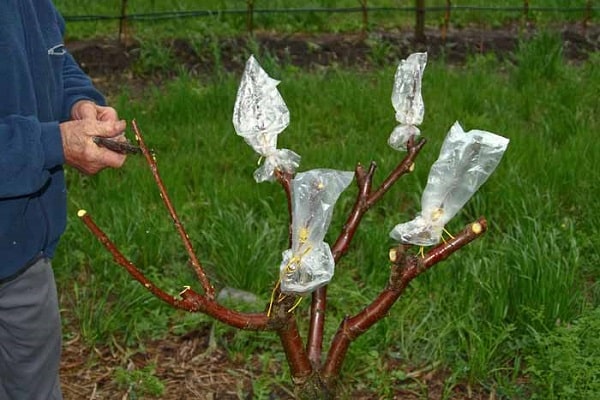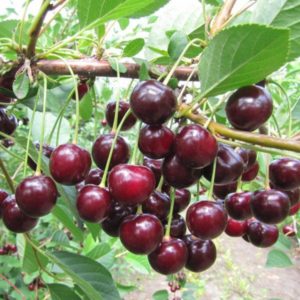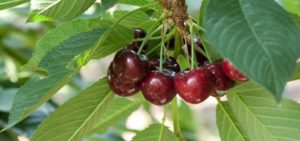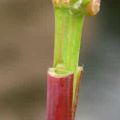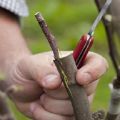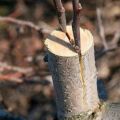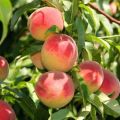Step-by-step instructions on how to properly plant cherries on cherries and the timing of the procedure for beginners
Grafting is a useful and necessary procedure aimed at multiplying and breeding the desired varieties of fruit trees. Therefore, any gardener should know about the technologies of how to properly plant cherries on cherries and not be afraid to apply them in practice. Moreover, a grafted cherry can present its owner with rich yields of bulk berries much earlier in time than ordinary young seedlings.
Method advantage
So, the agrotechnical technology of grafting is represented by the possibility of transferring one fragment of a plant to another in order to merge them into a single organism, but with new features and properties.
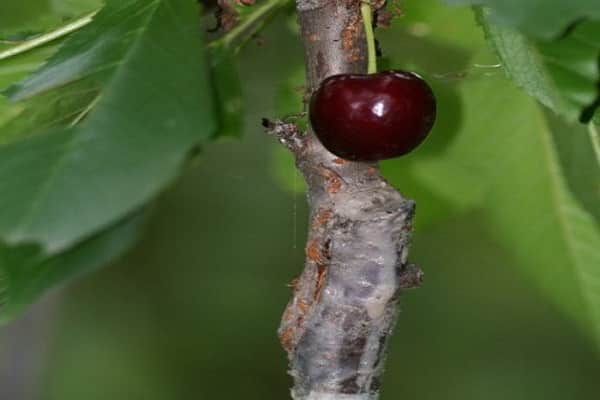
The graft is an aboveground part of a tree with properties that affect the future quality of fruits and harvest, and is spliced with its underground fragments, namely with a stock, which affects the functional characteristics of the plant.
The advantage of the method lies in solving several problems at once, namely:
- In the preservation of the varietal qualities of the described tree, since seed cultivation of certain varieties negatively affects the characteristics obtained from the mother plant;
- In forcing the yield period. The grafted cherry is ready for fruiting after 2 years, while the trees sprouted from the seed will take much longer - about 5-8 years.
- In the rejuvenation of plantings. Unproductive aged trees are pruned, and then crossed with young cuttings.
- In increasing the resistance of plants to various types of diseases and to negative environmental conditions. The so-called hybridization helps in the fusion of delicate and vulnerable garden varieties with their wild, hardy relatives.
- Combining the characteristics of certain varieties in a single representative.
- In the factor of saving garden space, since shoots of a wide variety of cherry varieties can grow on one standard plant.
Important! Grafting can help maintain a damaged or even broken tree, but only if the plant has a living root system.
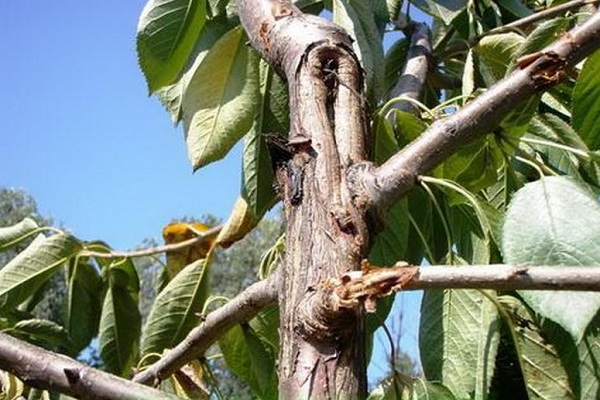
The timing of the vaccination
The most successful seasonal phases of cherry grafting are:
- spring periods, starting from March and ending with the first decade of April;
- summer - from the second decade of July to August.
However, based on horticultural experience, it is spring, at the peak of sap flow in trees, that is represented by the best period for grafting.
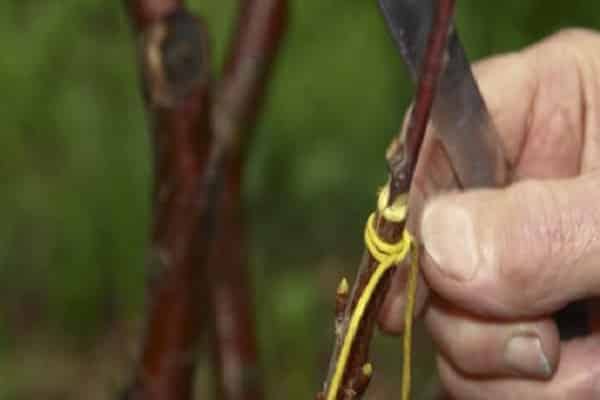
Summer, for grafting cherries with green cuttings, even at the moment the branches stop growing, is not the best period of time, due to the mismatch between the stock and scion of the cambial layers.
In relatively warm weather, crossing can be carried out in the fall, but, in any case, the period of fusion will be fully completed only closer to spring.
In winter, fruit trees, with a slowdown in metabolic processes, are in the so-called hibernation.
Important! If the grafting technology will be carried out in summertime, watering of the stock must be carried out ahead of time, in order to accelerate the sap flow.
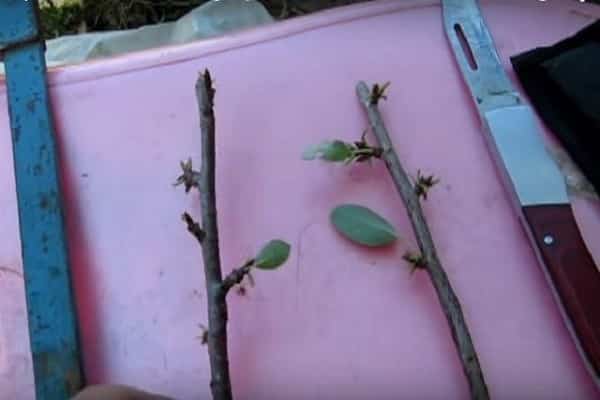
What trees can be combined with
It happens that in the garden, apart from an old cherry tree, there is not something fruitful for which a graft could be made. And to grow a new, the same varietal, stock is not only long, but also difficult, especially when there is no guarantee of the success of grafting.
But if a plum grows on the garden plot, then the crossing technology can be carried out directly on it. Moreover, this fruit tree is marked not only by the strongest rootstock, but also by excellent adaptive capabilities.
Also, a cherry tree can be grafted onto fruit rootstocks in the form of:
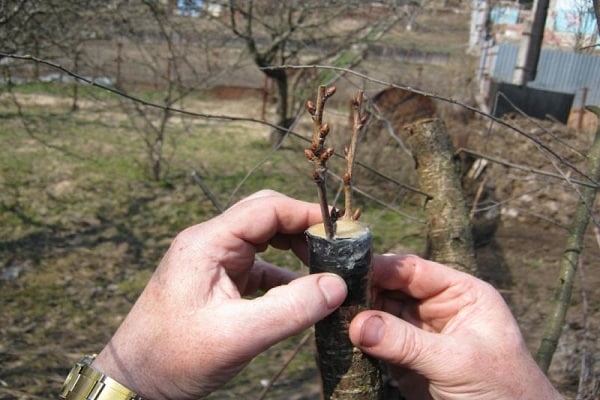
- bird cherry;
- cherry plums;
- cherries;
- thorns.
The rootstock in the form of cherry plum has the advantages - the culture is frost-resistant and has a well-branched and strong root system.
When crossing cherries, gardeners should know that splicing with cherries will go much faster, due to their excellent compatibility.
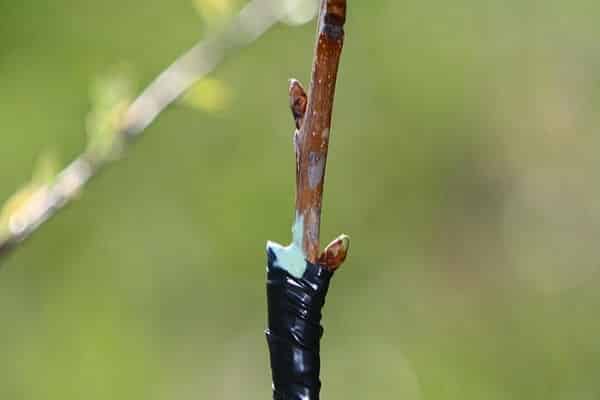
Step-by-step instructions for the procedure
For novice gardeners, there are instructions for grafting cherries in one way or another.
Copulation
It is possible to inoculate a cherry using a cuttings - the so-called copulation, and a bud - by means of budding.
Copulation is suitable for twigs of the same size, with the most suitable diameter of 1.5 centimeters. Slices must be carried out at the ends of both the scion and the rootstock. The cut should be within 3-4 centimeters in size.
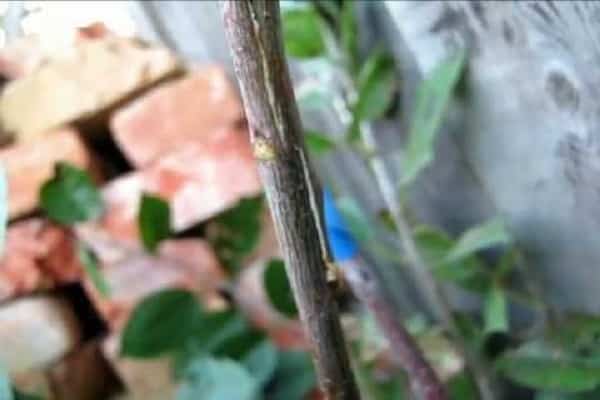
After such preparatory work, both sections must be connected, so that the cambial layers coincide in area. Wrap the place of confluence with a special material, in the form, for example, of a film, or make a special treatment using the so-called garden varnish.
Important! To protect the future tree from possible infection, it is recommended that the wound surface of the plant be treated with special antibacterial agents.
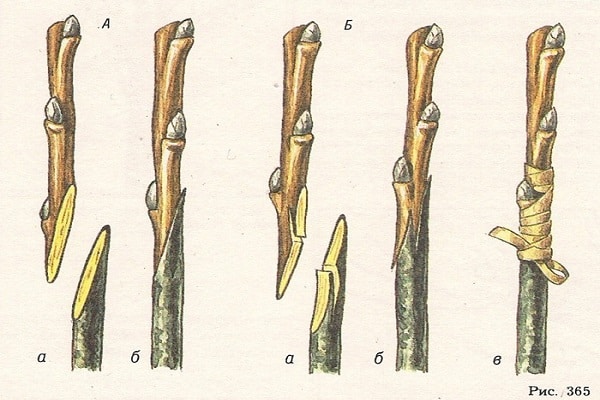
For the bark
In order to properly plant the cherry on the bark, and before the peak of sap flow, you must first free the rootstock from twigs. Then prepare cuttings for it - from 2 to 4 pieces, with transverse cuts at the ends.
After the stock is processed with a hacksaw and cleaned with a knife. On the bark, make five-centimeter cuts along the base, where and insert the scion tightly, cut to cut.
Important! Work on the cuts on the bark must be carried out with a sharp knife to prevent possible damage to the wood itself.
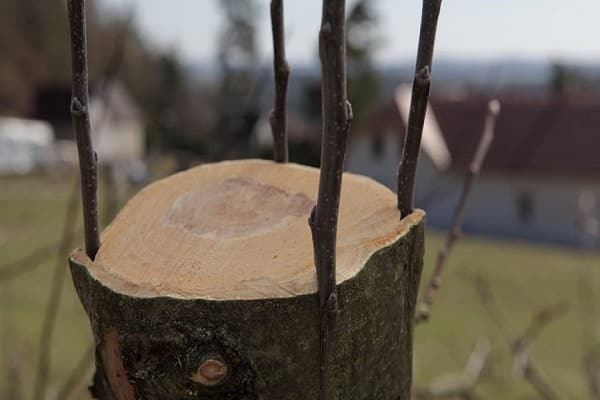
Into the cleft
The method of crossing trees must be carried out before the onset of the growing season. The preparatory step for grafting is the process of cutting off knots - on a young tree, work begins with an indent of about 40 centimeters from the beginning of the branching of the trunk, while an old plant is processed by increasing this distance to a meter.
The graft is carried out following the instructions below:
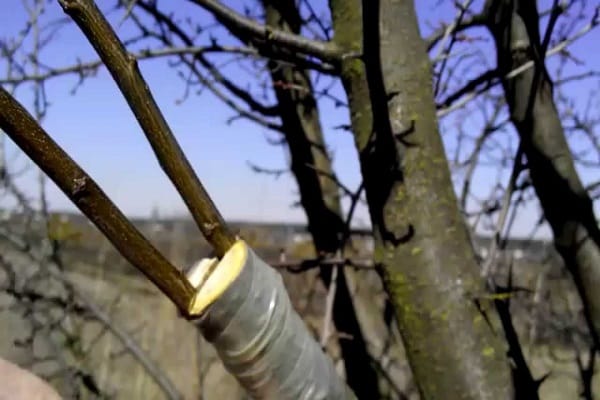
- the base of the cutting with several buds is cut with a knife into the so-called double wedge;
- the stock is subjected to sawing to the desired height with its further stripping;
- using a knife, the stock is split exactly in the middle;
- the scion is inserted into the split, so that it coincides with the bark of the rootstock bark. If the thickness of the plant allows, then up to 2 cuttings at a time are buried in the splitting site;
- the grafted area of the tree is wrapped with twine, polyethylene or treated with garden pitch.
In comparison with other methods of crossing, grafting with cuttings in the split is due to the best survival rate.
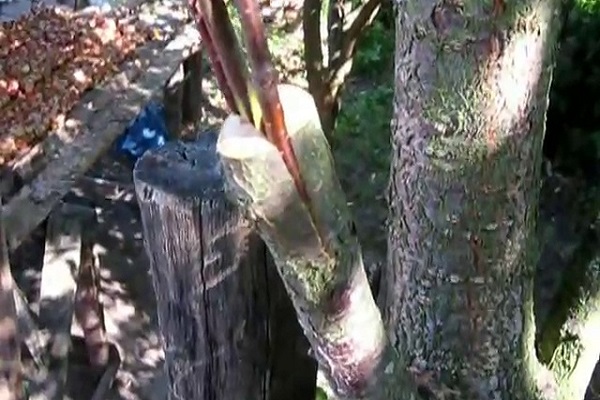
Into the semi-cleavage
The advantage of this grafting method lies in the slight damage to the trees.
Slices must be carried out on the side of the rootstock, namely:
- retreating about 3 centimeters from the end of the cut;
- to split with a hatchet, but not completely;
- stick the cuttings into the incision so that their tissues are in close contact with each other.
The scion is harvested in the same way as for full splitting.
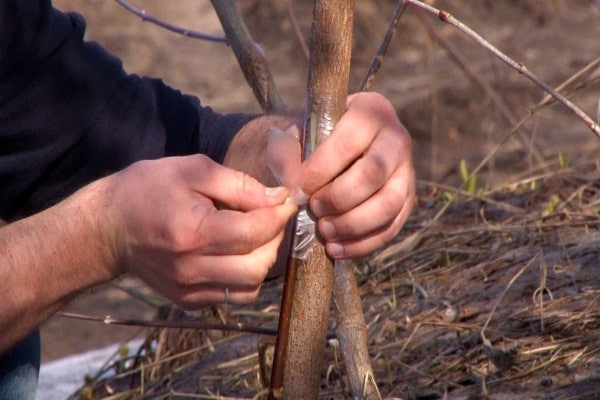
Corner cut
Inoculation in a similar way is carried out with twigs about 2 centimeters in diameter.
To begin with, an angular-type notch is made with a knife located 3 centimeters from the edge, where the cut is made to a depth of 6 millimeters, at an angle of 30. Moreover, the same cut is made in the other direction, but of a different size, about 6 centimeters.
The cut at the lower end of the cutting is made diagonally, in accordance with the cutouts made on the rootstock. The place of confluence is wrapped with a special film.
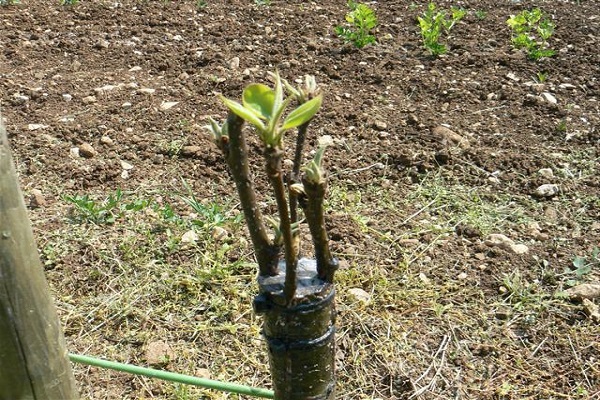
Side cut
This method assumes a slanting cut, 20 centimeters off the base of the branch. Moreover, the length of one side should be more than the other by a centimeter. The stalk, intended for grafting, is worn in the form of a wedge, the sides of which must also have a difference of 1 centimeter.
After such preparation, the shoot is inserted into the incision and wrapped with a protective film.
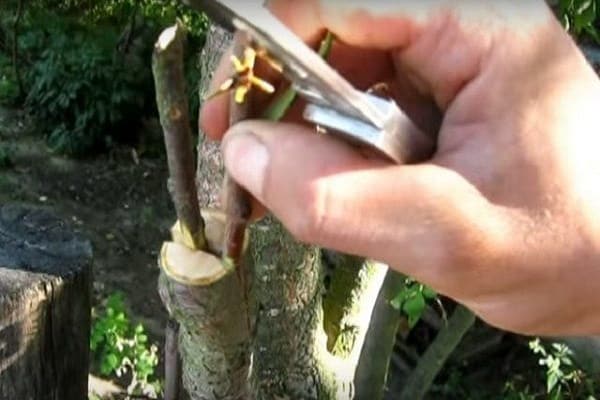
By the bridge
Grafting using the bridge method is used for fruit trees affected by hares in winter.
The graft is placed in a circular manner, along the diameter of the trunk. The tips of the shoots are distributed just below or above the resulting wound. The cleaning of damaged areas is carried out up to the healthy tissue of the tree. Then cut along the edges. The tips of the shoots are cut obliquely.
Initially, the graft is inserted into the bottom incisions. After the cuttings are bent into an arc and inserted into the incisions from above. The joints are wrapped with twine.
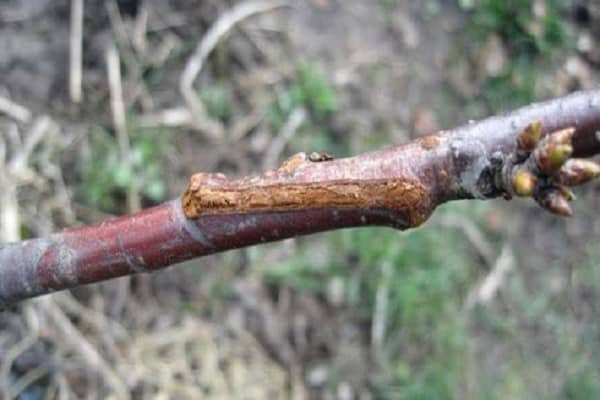
Post-vaccination care
It will become clear whether the scion has taken root or not in a month. A positive result will be indicated by the buds of the scion and their growth.
In the conditions of the end of the grafting process, it is necessary:
- Strengthen the branch with a special tire - for strength and protection of the scion from windy weather.
- The remains of the vaccine film should be removed after a certain period of time, but it is more expedient to leave everything as it is until next year.
- Provide the area near the rootstock with fertilizers containing nitrogen, phosphorus and potassium.
A careful approach to grafting with the choice of the right technology is the key to the success of the established crossing goal, and the first time.
